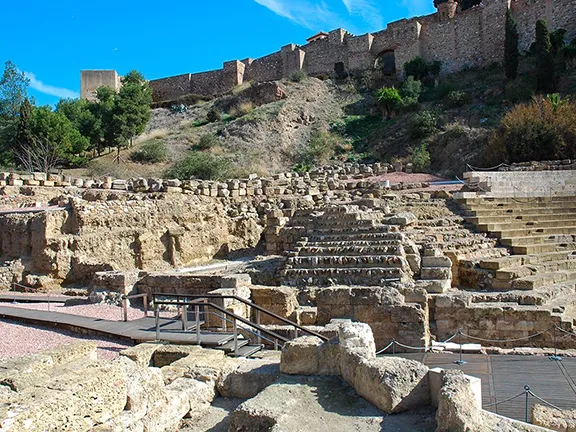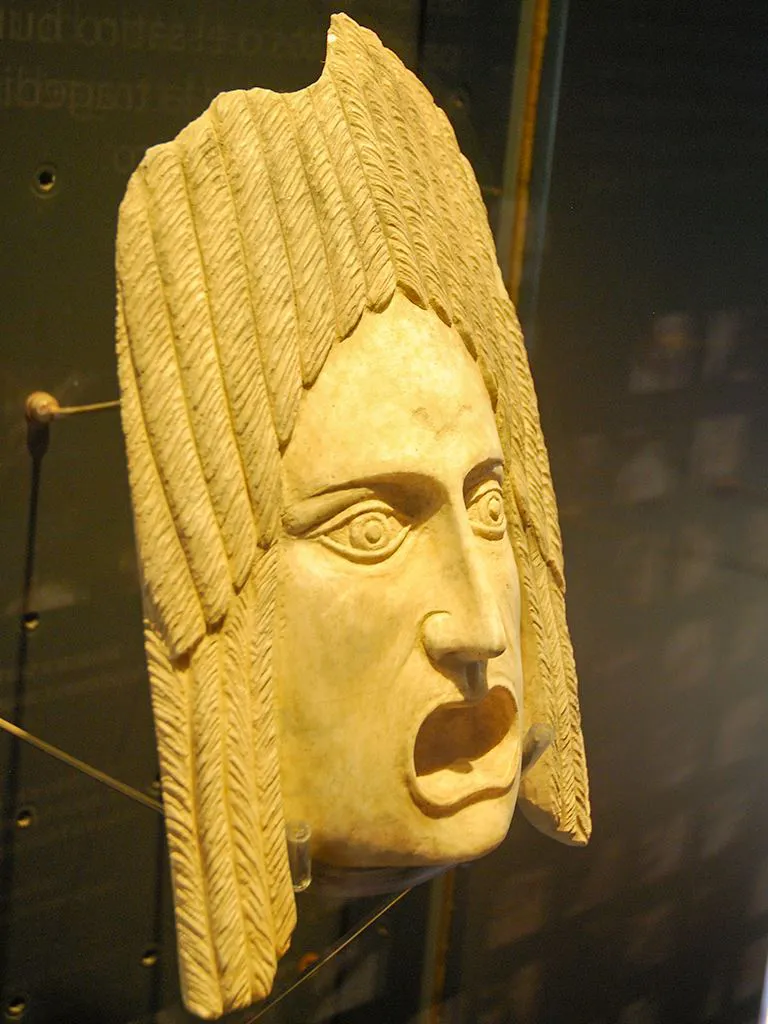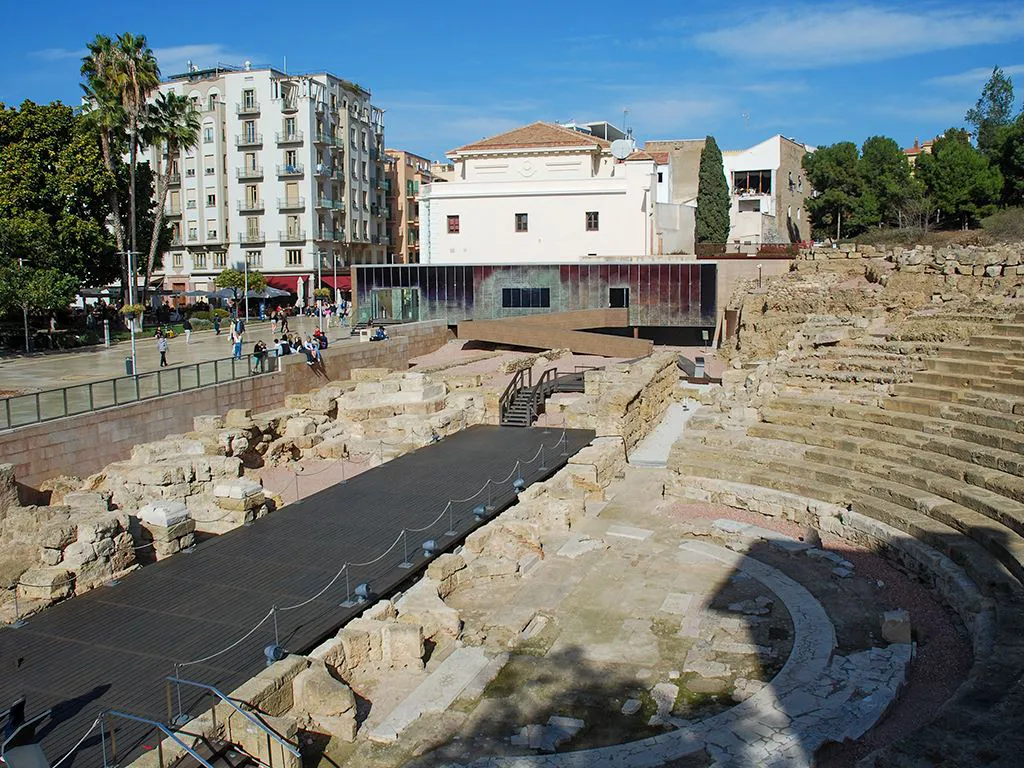Step into the enchanting world of the Roman Theatre at Málaga, Spain. Discover the grandeur of this well-preserved ancient marvel, its rich history, and cultural significance. Immerse yourself in a journey through time, witnessing the enduring legacy of Roman architecture and artistic expression.
By Nick Nutter | Updated 9 Jun 2023 | Málaga | Places To Go |
Login to add to YOUR Favourites or Read Later


Teatro Romano Malaga
Nestled in the heart of the captivating city of Málaga, Spain, lies a remarkable testament to ancient Roman architecture and cultural heritage: the Roman Theatre of Málaga. This well-preserved archaeological gem stands as a living testament to the rich history and enduring legacy of the Roman Empire.


Masks at the Teatro Romano Malaga
Dating back to the 1st century BC, the Roman Theatre of Málaga holds centuries of stories within its limestone walls. Huddled beneath the Alcazabar, the Roman theatre in Málaga only opened for visitors in 2011, although its presence had been known since the 1950s. In 1951 the gardens attached to the Casa de Cultura were being developed when workers found the first signs of archaeological remains. Excavations commenced. In 1995 the Casa de Cultura was demolished since it sat over a good portion of the site. Once excavated, restoration started, made more difficult by the fact that much of the masonry now formed part of the construction of the neighbouring Alcazabar. Despite problems, researchers managed to put together a detailed history of the theatre and it has since become a cherished attraction for locals and visitors alike.


Masks at the Teatro Romano Malaga
The Teatro Romano was built in the 1st century BC while Emperor Augustus was in power. Crowds were entertained there for two hundred years with music, plays and concerts. Probably around the 3rd century AD and certainly by the time the Romans left Andalucia, the theatre fell into disuse. In the mid 8th century AD the Moors had taken over the area and used the stone from the theatre to construct their homes and later the Alcazabar. Once again abandoned, the theatre accumulated dirt and rubble, and was forgotten until the mid 20th century.


Teatro Romano Malaga
In its heyday, wooden poles were erected around the circumference of the theatre between which was draped muslin to shade spectators from the sun. Thousands of years later muslin is still draped between the eaves of buildings along shopping streets in the main cities of Andalucia for the same purpose.


Roman Theatre Malaga
The theatre itself has been well restored. Semi-circular in shape, the theatre is divided into three parts, the general seats or Cavea, the VIP seats or Orchestra and the stage, Proscaenium. The semi-circular Cavea is divided into three sections by aisles to give the Inma Cavea, the Media Cavea and the Sunma Cavea. The audience entered and exited via separate Vomitorio, (a word that means spew forth). With a touch more sensitivity we would call them covered passageways. The VIPs were seated in the Orchestra, which was between the Cavea and the slightly raised Proscaenium. The Proscaenium has a wooden parquet floor, as it would have had originally.
As you approach the Roman Theatre, you'll be struck by its grandeur and the sense of stepping back in time. With a seating capacity of approximately 2,000 spectators, it once served as a venue for performances, including plays, music, and poetry recitals. The theatre's acoustics, cleverly designed to carry sound throughout the seating area, still amaze visitors to this day.
The semi-circular orchestra, where the actors and musicians would perform, is surrounded by a tiered seating area divided into three sections. The front rows were reserved for the city's elite, while the general public occupied the higher levels. The stage itself, adorned with decorative elements, provided a magnificent backdrop for the performers.
Beyond its architectural magnificence, the Roman Theatre also offers insight into the daily lives of its time. Adjacent to the theatre, you can explore the remains of a Roman market (macellum), where locals would gather to buy and sell goods. This market square gives us a glimpse into the bustling commercial activities that once thrived in this ancient city.
Today, the Roman Theatre serves as more than just a historic site. It has become a hub of cultural events, hosting various performances and exhibitions. As you attend a play or concert within its ancient walls, you can't help but feel the weight of history surrounding you, bridging the gap between past and present.
On its opening night in September 2011 the first performance for two thousand years was from Andrés Mérida, Daniel Casares, and Carlos Álvarez, reading from Juvenal Soto and the poetry of Pablo Picasso and Manuel Alcántara. I think Augustus would have been pleased.
Visiting the Roman Theatre of Málaga is a must for history enthusiasts, architecture lovers, and anyone seeking a unique cultural experience. Whether you wander through the seating area, imagining the vibrant performances that once took place, or marvel at the meticulous restoration efforts, this archaeological wonder offers a journey through time.
At the entrance to the theatre, the long box-like structure is now the Visitors Centre. During the excavations and later restoration, it had been the workplace for the archaeologists. It contains very little information about the theatre itself, mainly concentrating on the work involved in re-opening it to the public after nearly two thousand years but there is an interesting display of masks used during the performances. Players held different masks in front of their faces to indicate the part they were now playing.
As we explore the Roman Theatre of Málaga, we pay homage to the ancient civilizations that shaped our world. By preserving and appreciating these remnants of our past, we honour the vision, craftsmanship, and artistic expression of those who came before us.
So, if you find yourself in the mesmerizing city of Málaga, don't miss the opportunity to immerse yourself in the captivating aura of the Roman Theatre. Let the echoes of the past guide you as you witness the enduring beauty of this ancient structure, reminding us all of the everlasting impact of human ingenuity and artistic expression.
For opening times of the Roman Theatre at Malaga, click here. Entrance is free.